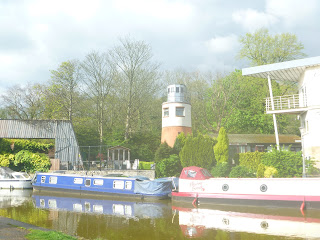
Subtitled (in the UK version, which has a different cover to the above) 'How the mystery of bird migration was solved' this is a fascinating look into the science of migration.
The book looks at human curiosity about bird migration, going right back to the times when people thought that summer visitors spent the winter in the bottom of ponds or that they flew to the moon. It then follows the development of technologies that have helped scientists to track migrating birds - from recording the calls of birds that are migrating at night to fitting birds with radio transmitters to genetic research and taking in meteorology and radar. The author spends time with field researchers to get first hand experience of some of the vital work that goes on to investigate the (often long) journeys made by (often tiny) birds and also investigates the world of citizen science where ordinary people are encouraged to participate in research.
Research is not just useful for discovering the routes taken by migrating birds but also sheds light on how climate change may be affecting migration routes and has significant results for conservation. Science has been able to shed light on issues such as how the quality of habitats affects the pattern of migration of certain species (birds living in better quality habitat being able to eat more and be in better shape when preparing for migration) which can lead to more informed conservation of birds and the habitats they rely on. Research using satellite tagging is enabling scientists to help to save the endangered Spoon Billed Sandpiper, a small shore bird with a distinctive shaped beak.
The author also looks at ways in which ordinary people can help migrating birds, whether by switching off lights on key nights for bird migration through cities (to avoid disoriented birds from crashing into windows).
The book may be, in general, too science based for some readers, but is full of human interest stories such as the Dutch scientist Theunis Piersma, who rewrote his 2012 scientific paper 'Solving a Migration Riddle' as a book in Frisian, the minority language of his village, where the House Martins who he was studying actually nested. The book 'Guests of Summer: A House Martin Love Story' has since been published in Dutch and English.
I definitely recommend this book for anyone with a keen interest in bird migration, particularly if you have a scientific background.
Flight Paths by Rebecca Heisman, published (2023) by Swift Press.
You can read an article by the author about the writing of this book on the BTO website here.























